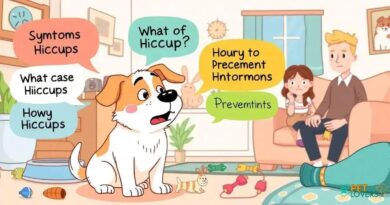What is: Xylitol poisoning symptoms and treatment
What is Xylitol?
Xylitol is a sugar alcohol commonly used as a sweetener in various products, including sugar-free gum, candies, and some baked goods. While it is safe for human consumption, xylitol is highly toxic to dogs. Even small amounts can lead to severe health issues, making it crucial for pet owners to be aware of its presence in food items. Understanding the risks associated with xylitol is essential for ensuring the safety and well-being of your canine companions.
Xylitol Poisoning Symptoms in Dogs
Recognizing the symptoms of xylitol poisoning in dogs is vital for prompt treatment. Initial signs may include vomiting, lethargy, and loss of coordination. As the condition progresses, dogs may experience seizures, tremors, and even a significant drop in blood sugar levels, known as hypoglycemia. Pet owners should be vigilant and monitor their dogs closely for any unusual behavior, especially after consuming products containing xylitol.
How Does Xylitol Affect Dogs?
When ingested, xylitol is rapidly absorbed into a dog’s bloodstream, leading to a quick release of insulin from the pancreas. This insulin surge causes a dangerous drop in blood sugar levels, resulting in hypoglycemia. Additionally, xylitol can cause liver failure in dogs, which can be fatal if not treated promptly. Understanding the biochemical impact of xylitol on dogs is crucial for pet owners to prevent accidental poisoning.
Immediate Actions to Take
If you suspect your dog has ingested xylitol, it is essential to act quickly. The first step is to contact your veterinarian or an emergency animal clinic immediately. Provide them with information about the product consumed, the amount ingested, and the time of ingestion. Do not wait for symptoms to appear, as early intervention can significantly improve your dog’s chances of recovery.
Veterinary Diagnosis and Treatment
Upon arrival at the veterinary clinic, your dog will undergo a thorough examination. The veterinarian may perform blood tests to check glucose levels and assess liver function. Treatment typically involves intravenous fluids to stabilize blood sugar levels and medications to protect the liver. In some cases, activated charcoal may be administered to limit further absorption of xylitol. The treatment plan will depend on the severity of the poisoning and the time elapsed since ingestion.
Monitoring and Aftercare
After treatment, your dog will need to be closely monitored for any lingering effects of xylitol poisoning. Regular follow-up appointments with your veterinarian are crucial to ensure that blood sugar levels remain stable and that liver function returns to normal. Pet owners should also be aware of the potential for delayed symptoms, as some effects may not be immediately apparent.
Preventing Xylitol Poisoning
Prevention is the best strategy when it comes to xylitol poisoning. Pet owners should carefully read ingredient labels on all food products, especially sugar-free items. Keep any products containing xylitol out of reach of pets, and educate family members about the dangers of xylitol. Additionally, consider alternatives to xylitol for sweetening foods and treats that are safe for dogs.
Common Products Containing Xylitol
Xylitol can be found in a variety of everyday products, including sugar-free gum, mints, toothpaste, and some baked goods. It is also present in certain medications and dietary supplements. Being aware of these common sources can help pet owners avoid accidental exposure. Always check labels and consult with your veterinarian if you are unsure about a product’s safety for your dog.
Conclusion: The Importance of Awareness
Understanding the dangers of xylitol and its effects on dogs is crucial for every pet owner. By being informed about the symptoms of xylitol poisoning and the necessary steps for treatment, you can help protect your furry friend from this potentially life-threatening situation. Awareness and education are key components in ensuring the health and safety of your dog in a world where xylitol is increasingly common.


